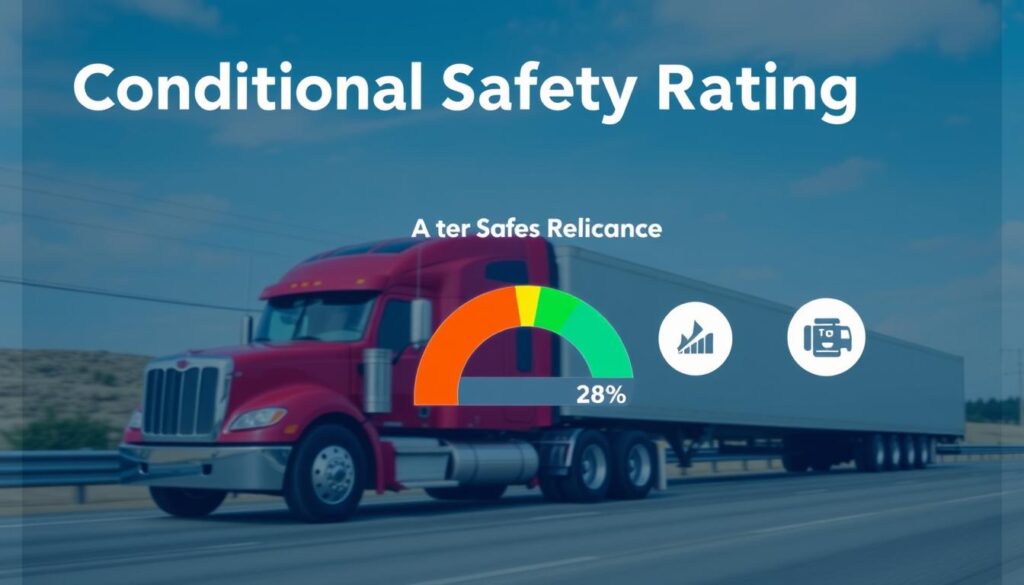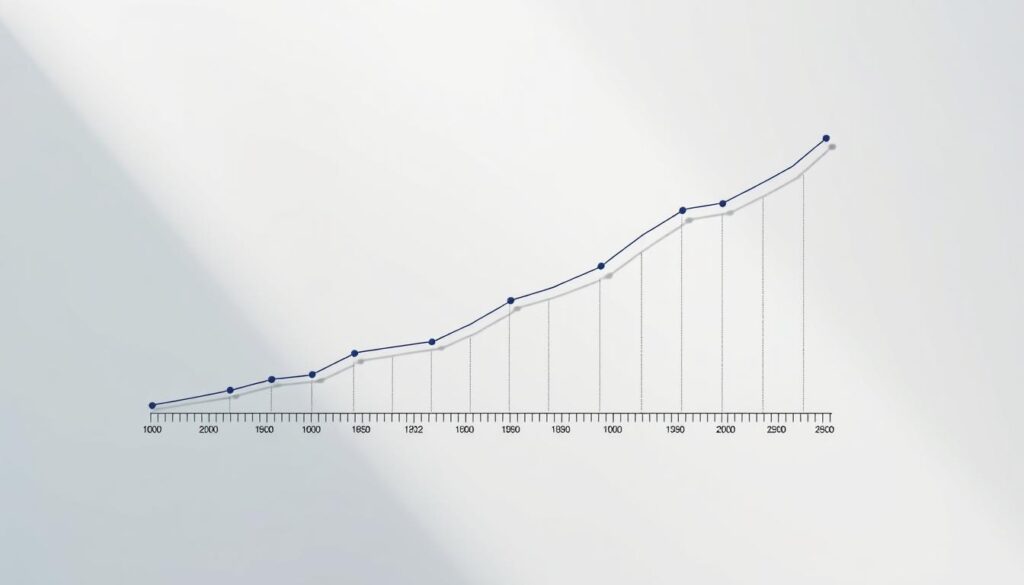As a business owner, you’re likely aware that certain industries face elevated liability concerns, making it challenging to secure adequate insurance coverage. Nearly 30% of businesses in America fail due to inadequate protection, highlighting the importance of proper insurance to safeguard operations.
Businesses with unique risk profiles often struggle to find suitable coverage. Specialized insurance policies can address these needs, providing tailored solutions for protection. In this comprehensive guide, we’ll explore how to identify risk factors, choose appropriate coverage, and implement strategies to lower your risk profile.
Key Takeaways
- Understand the importance of high risk business insurance for your industry
- Learn how to identify risk factors that impact your business
- Discover strategies to lower your risk profile and secure affordable coverage
- Explore tailored insurance solutions for high-risk businesses
- Gain insights into choosing the right insurance policies for your business needs
Understanding High Risk Business Insurance
Businesses deemed high risk face unique insurance challenges that standard policies often can’t address. Almost 30% of businesses in America fail due to the inability of the owner to get the right level of insurance, highlighting the importance of understanding high risk business insurance.

What Makes a Business “High Risk”
A business is considered high risk based on several factors, including industry type, claims history, and operational hazards. Insurers evaluate businesses using metrics such as SAFER scores, loss ratios, and accident history, particularly in industries like transportation. Companies with hazardous operations or high liability exposure are typically categorized as high risk.
The Importance of Specialized Coverage
Specialized coverage is crucial for high risk businesses as standard insurance policies often fall short. Businesses classified as high risk face higher premiums and more restrictive policy terms. Specialized coverage provides tailored protection against specific risks, potentially saving businesses from devastating financial losses. This type of insurance is essential for proper protection and can be the difference between business continuity and failure.
Industries Commonly Classified as High Risk
Certain industries are more prone to risks due to the nature of their operations, making them high risk businesses. These industries often face unique challenges that require specialized insurance coverage.
Transportation and Trucking Companies
Trucking companies with poor SAFER scores, high losses, accidents, or driver issues are considered high risk. This classification results in higher premiums and less flexibility in policy writing. Commercial auto insurance is crucial for these businesses.

Manufacturing with Hazardous Materials
Manufacturing businesses that produce products with high hazards may carry a higher risk of lawsuits. These high hazard manufacturers have unique exposures, including workplace injuries and environmental damage, making liability insurance essential.
Construction and Contracting
The construction industry is classified as high risk due to workplace accidents, third-party liability, and property damage concerns. Businesses in this industry require comprehensive insurance coverage to mitigate these risks.
In conclusion, various industries are considered high risk due to their operational challenges and potential risks. Understanding these risks is crucial for obtaining the right insurance coverage.
7 Essential Types of High Risk Business Insurance
Several types of insurance are crucial for businesses that are considered high-risk. These businesses often face a higher likelihood of unpredictable events, leading to increased numbers of claims.
Commercial Auto Insurance
Commercial auto insurance is vital for high-risk businesses that rely on vehicles for operations. It covers bodily injury and property damage liability, with a minimum coverage of $750,000 required by the FMCSA for MC authority.

Professional Liability Insurance
Professional liability insurance, also known as errors and omissions insurance, protects businesses against claims of negligence, mistakes, or failure to perform professional duties.
Workers’ Compensation
Workers’ compensation insurance is required for high-risk industries, covering medical expenses and lost wages for employees injured on the job.
Cybersecurity Insurance
Cybersecurity insurance protects against data breaches and cyber attacks, which is increasingly important for all businesses regardless of risk level.
Cargo and Equipment Coverage
Cargo and equipment coverage protects valuable assets during transportation and operation, providing comprehensive protection for high-risk businesses.
By combining these insurance types, high-risk businesses can create a comprehensive protection strategy that mitigates potential risks and ensures business continuity.
How Insurance Companies Assess Your Risk Level
To determine the risk associated with insuring a business, insurance companies conduct a thorough risk assessment. This process involves evaluating several key factors that contribute to the overall risk profile of the organization.
Claims History Analysis
Insurance companies analyze a business’s claims history to identify past incidents, frequency of claims, and total losses paid. This information helps insurers understand the likelihood of future claims.
Financial Health Evaluation
Insurers assess a company’s financial stability by examining credit ratings, debt-to-income ratios, and overall business sustainability. A financially stable business is considered less risky.
Industry-Specific Risk Factors
Industry-specific risk factors, such as SAFER scores for transportation companies or workplace safety records for manufacturing and construction, are also considered. These factors help insurers understand the unique risks associated with a particular industry.

By considering these factors, insurance companies can accurately assess a business’s risk level and determine the appropriate premium.
The True Cost of Inadequate Coverage
When high-risk businesses lack adequate insurance coverage, they expose themselves to potentially catastrophic financial risks.

Financial Implications of Claims
In the event of a major accident or lawsuit, liability claims can quickly exceed policy limits, leaving business owners personally responsible for potentially millions in damages. This can lead to severe financial strain, potentially even bankruptcy.
Business Continuity Concerns
Inadequate coverage can also threaten business continuity when operations must cease due to uninsured losses from property damage or equipment failure. The ripple effects can include damaged reputation, lost customers, and difficulty securing financing or partnerships, further exacerbating the initial claims.
5 Strategies to Lower Your Risk Profile
To minimize insurance costs, businesses must focus on lowering their risk profile. By implementing the right strategies, companies can significantly reduce their liability and insurance premiums.
Implementing Robust Safety Measures
Implementing robust safety measures and protocols specific to your industry can significantly reduce accident rates and liability exposure. This includes regular maintenance of equipment and vehicles.
Employee Training Programs
Comprehensive employee training programs that address safety procedures, regulatory compliance, and emergency response are crucial. This not only enhances safety but also reduces the risk of non-compliance.
Improving Financial Stability
Improving financial stability through proper accounting practices, debt management, and building cash reserves demonstrates reliability to insurers and can lead to better insurance terms.
Developing Business Continuity Plans
Business continuity plans that address potential disruptions demonstrate preparedness to insurance providers. This can include strategies for maintaining operations during unforeseen events.
Regular Risk Assessments
Conducting regular risk assessments helps identify and address potential hazards before they result in claims. This proactive approach can significantly lower your risk profile.
| Strategy | Benefit |
|---|---|
| Robust Safety Measures | Reduced Accident Rates |
| Employee Training | Enhanced Compliance |
| Financial Stability | Better Insurance Terms |
| Business Continuity Plans | Demonstrated Preparedness |
| Regular Risk Assessments | Lower Risk Profile |
Finding the Right High Risk Business Insurance Provider
High-risk businesses require specialized insurance providers who understand their unique challenges. Our Commercial Truck Insurance specialists are constantly working to get you the best rates, whether you are a new or existing client.

To find the right provider, it’s essential to research and identify insurance companies that specialize in high-risk industries and have experience with businesses similar to yours.
Questions to Ask Potential Insurers
When evaluating potential insurers, ask about their experience with your industry, claims handling process, risk management resources, and policy customization options. This will help you understand their ability to provide tailored coverage for your business.
Red Flags to Watch For
Be cautious of insurers with excessive exclusions, ambiguous policy language, or a poor customer service reputation. It’s crucial to assess their financial stability and claims-paying ability through ratings from organizations like A.M. Best and Standard & Poor’s.
Case Study: From High Risk to Manageable Risk
A seemingly ‘high-risk’ trucking company turned its fortunes around with the help of CNS’s expert risk management strategies. Company A, a 9-truck carrier, faced a major crisis when their surplus lines carrier canceled their liability insurance, leaving them with an annual premium of $190,000 despite having no actual losses.
CNS conducted a comprehensive review of the company’s safety performance, driver records, and operational systems. The analysis revealed that the high BASIC SMS scores were primarily due to just two drivers with poor records. CNS developed and implemented new hiring and qualification standards, significantly improving the company’s safety profile.
A Trucking Company’s Insurance Transformation
The strategic improvements implemented by CNS included new hiring standards, driver qualification processes, monitoring systems, and ongoing training programs. As a result, the client’s safety
| Year | Safety Score | Annual Premium |
|---|---|---|
| Before CNS | High | $190,000 |
| After CNS | Improved | $90,000 |
Key Lessons for Business Owners
This case study highlights the importance of identifying specific risk factors rather than accepting a blanket “high risk” classification. By targeting improvements in specific operational areas, businesses can significantly impact their risk profiles and insurance costs. Working with insurance specialists like CNS can provide valuable insights into industry-specific risk factors and mitigation strategies.
“By understanding and addressing the root causes of their high-risk classification, businesses can transform their insurance landscape and achieve significant cost savings.”
The outcome was a saving of $100,000 annually on premiums, and the client has remained a loyal CNS customer for 6 years. This case demonstrates the value of tailored risk management strategies and the importance of working with insurance specialists to achieve manageable risk levels.
Navigating the High Risk Insurance Application Process
To successfully navigate the high-risk insurance application process, businesses must be well-prepared and informed. The process involves several key steps, from initial inquiry to policy issuance.
Documentation You’ll Need
To apply for high-risk insurance, businesses need to prepare essential documentation, including financial statements, claims history, safety protocols, employee records, and industry-specific certifications. Having these documents ready streamlines the application process.
Timeline Expectations
High-risk insurance applications typically take longer than standard policies due to more extensive underwriting. Businesses should expect a detailed review process and be prepared to provide additional information as needed.
Working with Insurance Specialists
Working with specialized insurance brokers or agents who understand your industry can significantly improve the application process. They can help present your business in the most favorable light to underwriters, highlighting risk management practices and safety improvements.

Conclusion: Protecting Your High Risk Business
For businesses operating in high risk environments, having the appropriate insurance coverage is not just a necessity, but a strategic advantage. Throughout this article, we’ve explored the importance of tailored insurance solutions for high risk businesses, including the types of coverage available and strategies to lower your risk profile. By proactively managing risks and investing in the right insurance, businesses can protect their operations and focus on growth. It’s essential to regularly assess your coverage and consult with specialists to ensure you’re adequately protected against potential claims and liability.
